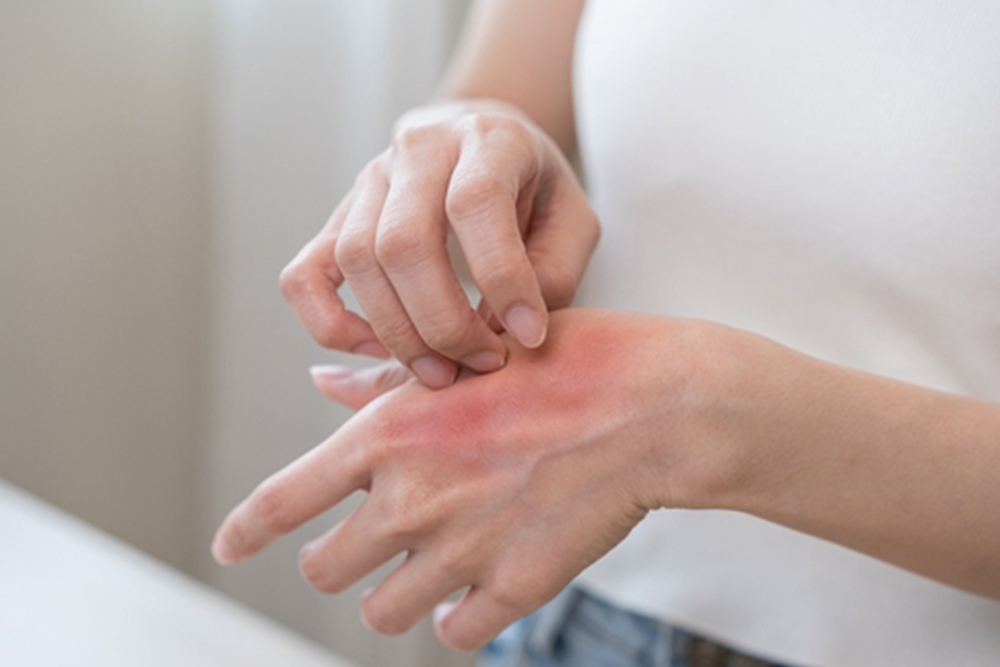Balancing Complexity and Adherence: New AAD Guidelines for Managing Atopic Dermatitis

New guidelines from the American Academy of Dermatology (AAD) emphasize a range of topical treatments for managing atopic dermatitis (AD), including corticosteroids, calcineurin inhibitors, PDE-4 inhibitors, and JAK inhibitors.
Fish Collagen: A Promising Alternative for Atopic Dermatitis Treatment

Atopic dermatitis (AD) is a chronic inflammatory skin disorder marked by itching, redness, and barrier dysfunction, affecting a large global population. Current treatments, such as topical corticosteroids and immunosuppressants, provide temporary relief but carry risks with long-term use.
Adipokines and Atopic Dermatitis: Linking Obesity and Immune Dysregulation

Atopic dermatitis (AD) is a chronic skin condition marked by pruritus, inflammation, and xerosis, often linked with asthma and food allergies. Recent research reveals a significant connection between AD and obesity, with dysregulated adipokines—peptides from adipose tissue—playing a central role.
Atopic Dermatitis: Immune Dysregulation, Barrier Dysfunction, and Emerging Treatments

Atopic dermatitis (AD) is a complex inflammatory skin disorder influenced by immune dysregulation, barrier dysfunction, and pruritus. Key immune cells, including Th2 cells, ILC2s, and basophils, drive inflammation by releasing cytokines like IL-4, IL-5, IL-13, and IL-31, while alarmins such as TSLP, IL-25, and IL-33 amplify the response.
Navigating Atopic Dermatitis: Evolving Treatments and the Path Toward Personalized Care

Atopic dermatitis (AD) is a chronic inflammatory skin condition affecting a significant portion of children and adults, with prevalence varying based on demographics and endotype complexities. Conventional treatments often rely on topical therapies, such as corticosteroids and calcineurin inhibitors, with systemic therapies recommended for more severe cases.
Understanding Itch: Complex Mechanism and Treatment Challenges in Atopic Dermatitis

Itch, or pruritus, is a complex sensation that triggers a desire to scratch, involving key organs like the skin, dorsal root ganglia, spinal cord, and brain. Itch signals are mainly transmitted by slower C-fiber sensory nerves, activated by external irritants and endogenous factors like cytokines. Chronic itch, especially in atopic dermatitis (AD), significantly affects quality of life and resists conventional treatments, emphasizing the need for improved understanding and management.
Environmental Factors Play Key Role in Atopic Dermatitis Development and Management, Study Shows

Recent studies suggest that environmental exposures, such as maternal stress during pregnancy, tobacco smoke, climate, pollutants, and dietary habits, may play a significant role in the development and progression of atopic dermatitis (AD). Maternal stress and prenatal antibiotic use have been linked to an increased risk of AD in children, while certain dietary factors, such as the consumption of fish, may have protective effects.
Decade of Atopic Dermatitis Research Highlights Advances and Gaps in Treatment and Prevention

Dermatology Times highlighted significant research in atopic dermatitis (AD) over the past decade. Researchers Peter Arkwright and Jennifer Koplin reviewed 14,406 peer-reviewed publications on AD from the last 10 years, accounting for 46% of all AD-related articles since 1948. The research predominantly focused on treatment, with biologics comprising 33% of all publications. Prevention strategies, such as the use of moisturizers, probiotics, and breastfeeding, were also extensively studied, although findings have been mixed. While early studies suggested moisturizers might prevent AD, larger trials found no significant benefit. Similarly, research on probiotics and breastfeeding showed varied results, highlighting the need for more consistent and robust studies.
Staphylococcus Aureus Protease Drives Atopic Dermatitis Itch

Research has revealed that the pathogenesis of atopic dermatitis (AD) involves complex interactions between the host’s genetic factors, immune system, and microbiome. Notably, the overgrowth of Staphylococcus aureus on the skin of patients with AD plays a significant role in worsening the disease. The bacteria’s V8 protease activates protease-activated receptor 1 on sensory nerves, triggering itch and perpetuating the cycle of skin damage and inflammation.
New Guidelines for Managing Atopic Dermatitis With Topical Therapies

Updated evidence has emerged since the 2014 guidelines that further informs the management of atopic dermatitis (AD) with topical therapies. These updated guidelines provide evidence-based recommendations for managing AD in adults using a variety of topical treatments. A multidisciplinary workgroup conducted a systematic review and used the GRADE approach to assess the certainty of evidence and to formulate and grade recommendations.

